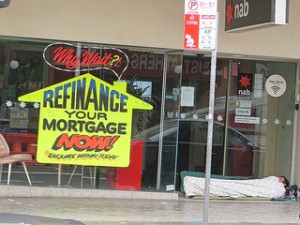 A home is one of the most significant purchases that anyone can make during their lives.
A home is one of the most significant purchases that anyone can make during their lives.
Potential homeowners may borrow from private lenders, local banks, or online financial institutions to finance their home purchase. Mortgages are serious, long term commitments for borrowers, which can last over periods of 15 to 30 years.
Using a loan to secure a home purchase is called a mortgage. A home (or personal residence of the borrower) will be used as collateral to secure this mortgage. The borrower now owes the lender a “monthly payment” (with interest), for a length of time in which the loan is repaid (usually 15 to 30 years).
The borrower’s home is now collateral for the mortgage which can be repossessed in the instance the borrower neglects to pay this monthly bill. In this case, a home can be taken from the borrower and sold at auction to recoup the lenders money.
What is Refinancing?
Refinancing replaces an existing loan (or debt) with a new type of loan or debt that is more favorable to the borrower. This new loan can be more favorable in its interest rates, the length of its repayment, the removal of some cash from its equity, or the switch from an adjustable to a fixed interest rate.
As federal interest rates change, the environment for lending money becomes more or less favorable to the borrower. Currently, in an attempt to increase lending in the commercial market, the Fed has been buying bonds to artificially lower this interest rate. This has created an environment which favors the borrower. Therefore, the cost to lend and borrow money has become very low.
A reduced cost to borrow money has allowed lenders to offer homeowners an opportunity to refinance at very cheap interest rates and fees. Some lenders have even paid borrowers a “promotional fee” as an incentive to complete this refinance.
While refinancing is generally thought to help a borrower improve their loan terms, it became predatory in the mid 2000’s. Some brokers and lenders refinanced homeowners into adjustable rate mortgages, which adjusted upwards significantly after home prices dropped in 2008. This generated significant profits for brokers through closing costs and fees. Many homeowners could not pay this “adjusted mortgage” when home prices dropped and ended up losing their home. This can be avoided by sticking with a fixed interest rate.
How to be Safe when Refinancing
Although some borrowers lost their home due to predatory refinancing, changing the loan to more favorable terms makes alot of sense if done correctly.
Many homeowners are tempted by adjustable rates, because they are usually lower. This temptation should be ignored because rates can adjust along with economic conditions. If interest rates adjust upward, a borrower can find themselves in a situation where they cannot pay their monthly mortgage fees. This could cause them to lose their home.
In most cases, it makes more sense to stick with a “fixed rate” mortgage for a personal residence. A fixed rate mortgage will keep the same interest rates over the lifetime of the loan. This will give a homeowner piece of mind in case home values fluctuate.
Why would you want an Adjustable Interest Rate?
Adjustable rate mortgages can be beneficial in some situations. This includes deals where a property is only purchased for a short period of time or may be intended for quick resale. Using adjustable rates for a temporary loan is an advanced technique that should be used by more experienced borrowers.
For personal residences, a fixed rate is almost always the best option. It is usually better to be safe than sorry, especially when it comes to your home.
Refinance with Bad Credit – is it difficult?
Refinancing still makes sense for those with bad credit, but you won’t get the best rates. Your interest rate and loan terms will always depend on your credit and financial history. If you have had some blemishes on your credit report, you most likely won’t qualify for the teaser rates you see advertised online. BUT by refinancing, you most likely will be able to improve the terms of your current loan.
If you have an adjustable interest rate (or ARM), switching to a fixed rate loan can be smart. It will allow you to stay locked into a particular monthly payment that is stable and predictable.
You may also choose to change the loan term in order to reduce the amount of interest you will pay. Interest on a mortgage can cost a homeowner significantly. By reducing the length of the loan, a borrower can reduce their loan costs significantly. This strategy only makes sense to borrowers that have no difficulty making their monthly payments and have the ability to pay more.
Many types of refinancing will come with additional “closing costs”. BUT, there is a certain type of home refi (called a no closing cost refi) that can pass these costs into a higher interest rate or longer amortization term. These can be helpful if a borrower does not have alot of cash to pay upfront.
Refinancing your home in 2014 will make sense if interest rates are still low. It is always important to search loan comparison websites in order to compare rates from multiple institutions and lenders. Be sure and do your due diligence before you accept any loan or refinance terms.
